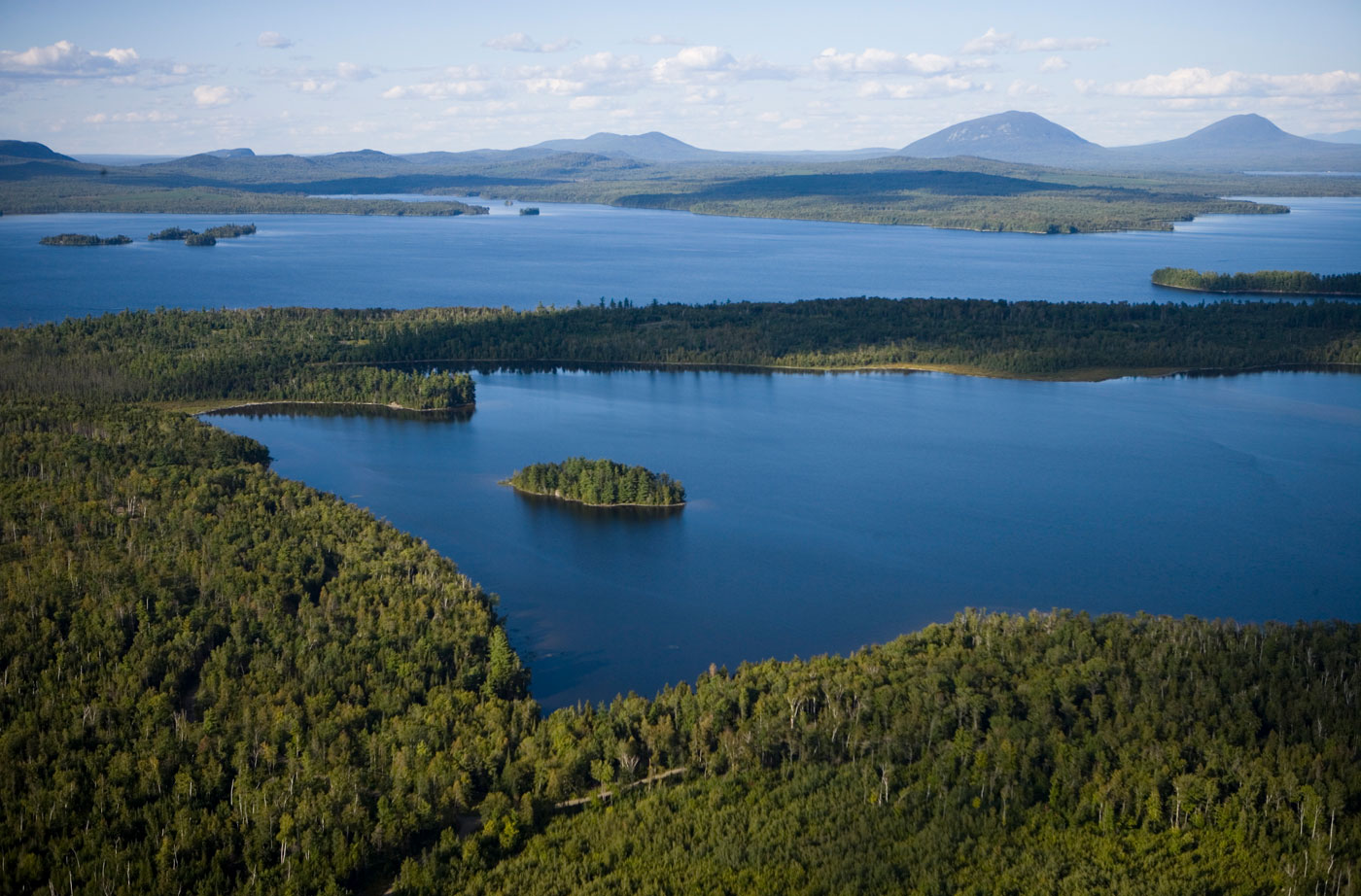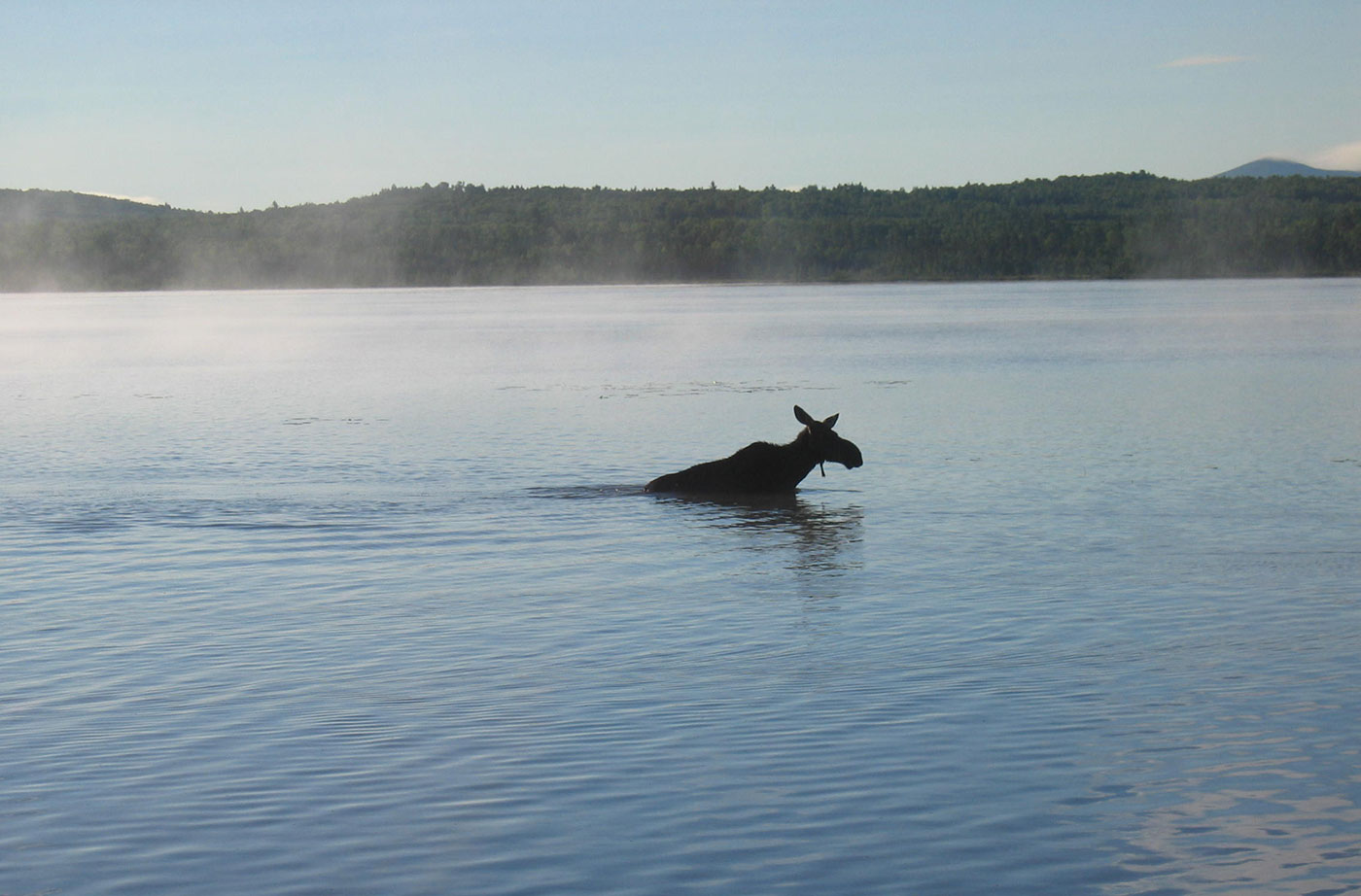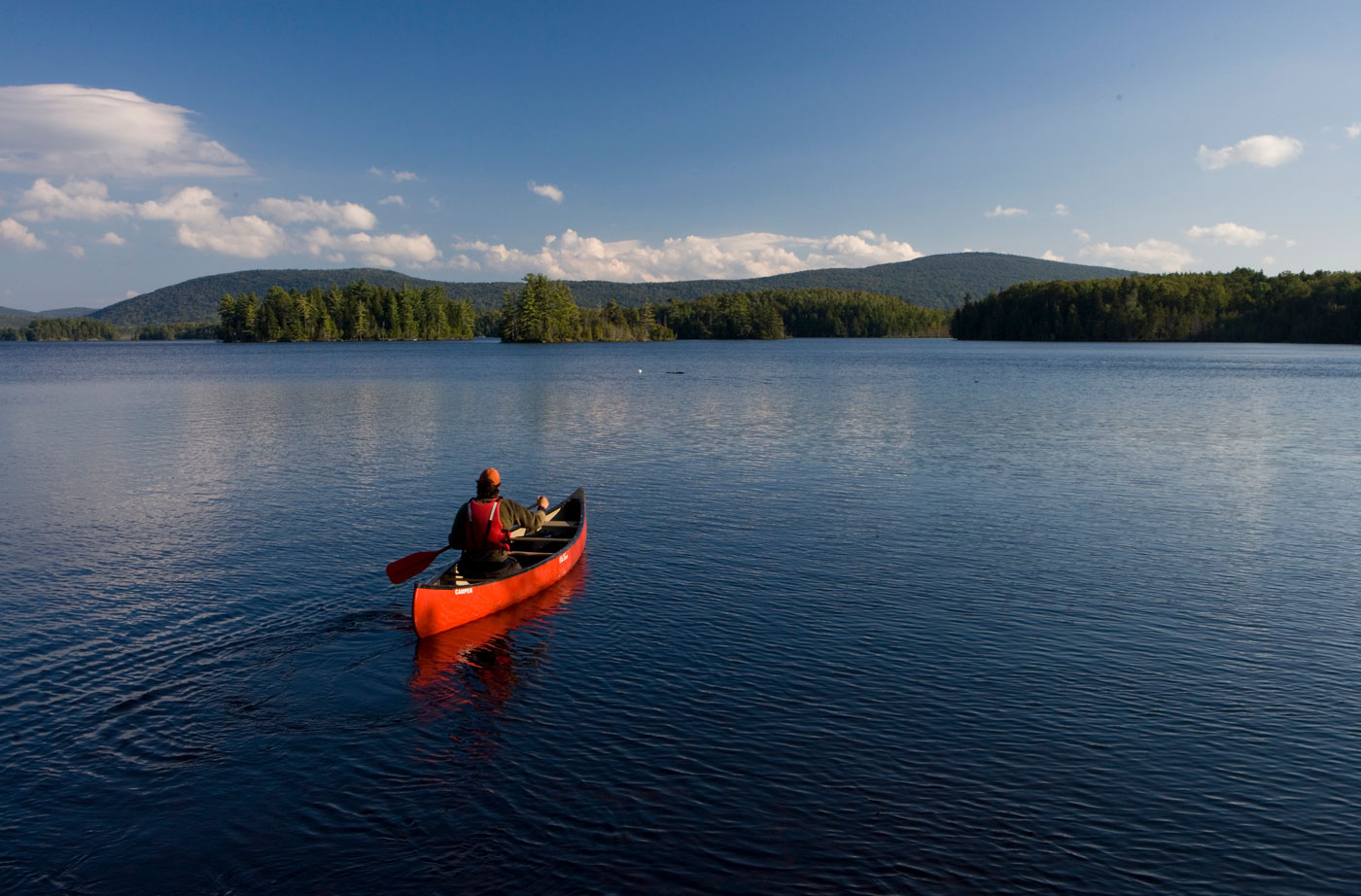Fifteen years ago, the Natural Resources Council of Maine and people who love Maine’s North Woods were embroiled in a protracted campaign to prevent the Seattle-based Plum Creek Timber Company from forever ruining the Moosehead Lake region with the largest development proposal in Maine history.

Aerial view of Moosehead Lake by J. Monkman/NRCM
Over a five-year period, ending in 2009, we collectively achieved major improvements in Plum Creek’s sprawling plan. After sending Plum Creek back to the drawing board multiple times to revise its plan, the Land Use Planning Commission (LUPC) approved a final Moosehead Region Concept Plan that required the company to locate most of its proposed development closer to existing communities and mandating conservation of hundreds of thousands of acres of forestland to mitigate impacts from the development.
So, you might be wondering what has happened since then, and what’s the status of the Moosehead Region Concept Plan.
The good news is that Plum Creek moved forward with all of the conservation measures, as required in its permit, but the company never implemented any of the development. All conservation easements and other public benefits that have already been realized, like public access improvements made through the Bureau of Parks and Lands, will remain in place.
In 2016, Plum Creek was purchased by Weyerhaeuser, creating the largest private landowner in the nation. And in September 2019, Weyerhaeuser announced that it wanted approval from the LUPC to terminate the Moosehead Region Concept Plan. This also is good news, potentially.

A moose makes its way across Moosehead, by Jason Heindel
Sometime soon, we anticipate that the LUPC will approve Weyerhaeuser’s request, with a stipulation that the company not pursue any development in the Moosehead region until after a regional planning process has been completed to determine how best to rezone the area covered by the Concept Plan.
NRCM will track these planning efforts for the Moosehead region. We have long-believed that the natural character of the area and a healthy economy can best be achieved through well-planned development concentrated near existing communities of Greenville, Rockwood, and Jackman, and not sprawling out into the currently undeveloped North Woods landscape.
While the LUPC is processing Weyerhaeuser’s petition for termination and mapping out the regional planning process, they have identified conditions for Weyerhaeuser to abide by until July 2022, or until the regional planning process plays out, whichever comes first. Those proposed conditions include the following:
- No clearcuts as defined by the Maine Forest Service within former development areas, will be allowed; and
- The company must refrain from submitting development permits for a reasonable period of time to allow for the community planning process to go forward.
These proposed conditions are encouraging, but we will need to remain vigilant to help guard the area from misplaced development. Because of the new adjacency rule, several areas that were slated for development under the Concept Plan could still be vulnerable because they are in “primary and secondary locations.” For that reason, a threat of development persists if the LUPC rezones the land to a “General Management” category that allows residential development.
In comments that NRCM submitted to the LUPC, we recommended that certain areas be exempted from the “primary and secondary locations” under the new adjacency rules. Specifically, we believe that Lily Bay, the west side of Moose Mountain near existing trails and Indian Pond, and Blue Ridge south of Rockwood should be protected from development based on their significant scenic and wildlife values.

Paddling on Moosehead Lake, by J. Monkman/NRCM
Given the disruption caused by the current pandemic, we are doubtful that a thorough regional planning process can conclude by July 2022. The pandemic and its side effects have disrupted lives and the economy and will continue to do so for several more months, so we urged the LUPC to move back the date by at least one year to allow more time for the community and stakeholders to organize.
What does this all mean for the future of the Moosehead region? First and foremost, we think a community-driven process to help determine the future of the Moosehead region is a good thing, as long as it’s inclusive, community input is a priority, and it engages a broad range of stakeholders. We are cautiously optimistic that the regional planning process will provide an opportunity to develop an approach that protects the natural character of the region with additional land conservation, while concentrating development and economic activity near existing communities. Such an approach could bring new tourism, investment, and recreation to Moosehead.
We also believe this request by Weyerhaeuser, and the planning process for the Moosehead region, creates an opportunity for the LUPC to assess whether the new adjacency rule is effectively achieving the LUPC’s mandate.
So, what can you do? Stay tuned. As the regional planning process gets going, we will keep you updated. NRCM will be actively engaged, as we were throughout the entire Plum Creek saga, to help ensure that this extraordinary landscape remains intact. Because, as we often said 15 years ago, “Once it’s gone, it’s gone forever.”
—Melanie Sturm, NRCM Forests & Wildlife Director










Thought this was a well planned out / time has come / they are riding ATV down Maine Streets . This is VACATION LAND FOR ALL TO SEE.
I’m glad you brought in the “adjacency rule” as that is what I would be concerned about.